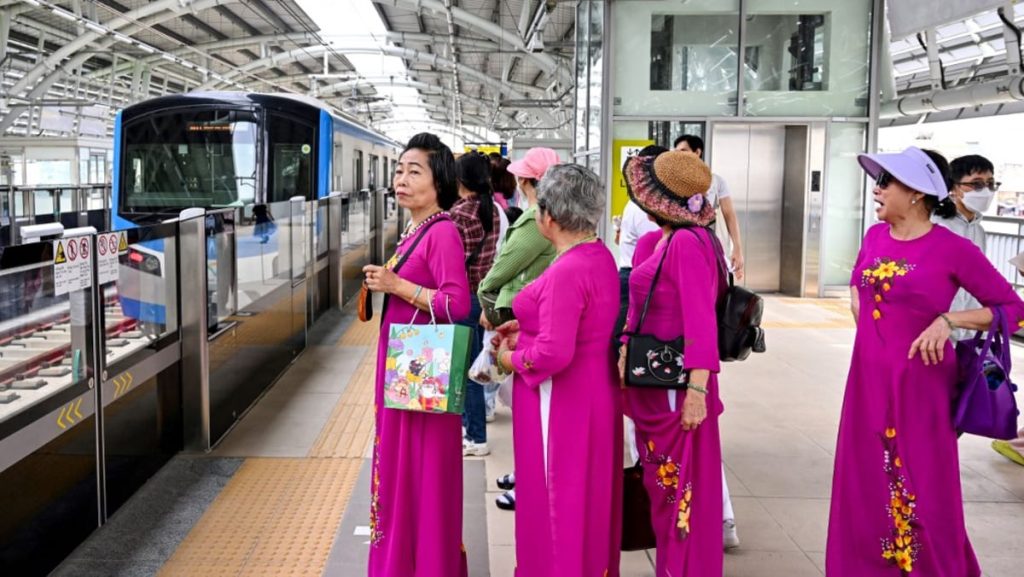The inauguration of Ho Chi Minh City’s first metro line marks a significant milestone in the city’s development, culminating a 17-year journey fraught with challenges and delays. Initially approved in 2007 with a projected cost of US$668 million and a five-year completion timeline, the project faced numerous setbacks, pushing the final price tag to nearly US$2 billion and the completion date to 2023. This prolonged development coincided with a surge in vehicle ownership in the bustling metropolis of 9 million, exacerbating traffic congestion, air pollution, and commute times. The metro line, primarily funded by Japanese government loans, aims to address these pressing urban issues by providing a much-needed alternative mode of transportation.
The completion of the first metro line, while a landmark achievement, represents only a small step towards alleviating Ho Chi Minh City’s complex transportation challenges. With only 14 stations spanning approximately 19.7 kilometers, the current line’s immediate impact on traffic congestion is expected to be limited. The line primarily serves the city’s eastern districts, including Thu Duc City, and does not yet extend to the heavily congested central areas or other densely populated districts. To truly transform the city’s transportation landscape and effectively reduce reliance on private vehicles, a more extensive network of metro lines is crucial. Future lines are envisioned to connect various parts of the city, providing greater accessibility and coverage for residents, while also integrating with other public transportation systems to create a comprehensive and efficient urban mobility network.
The prolonged construction period and significant cost overruns of the first metro line highlighted several critical issues in Vietnam’s infrastructure development. These challenges included slow disbursement of capital, unexpected technical complications, difficulties in personnel management, and the disruptive effects of the COVID-19 pandemic. The delays not only impacted the city’s transportation woes but also underscored the need for improved project management, more efficient allocation of resources, and enhanced technical expertise within the country. These lessons learned from the first metro line project are crucial for future infrastructure development in Vietnam, particularly for upcoming metro lines planned for Ho Chi Minh City and other major urban centers.
The experience gained during the construction of the first metro line holds valuable insights for streamlining future infrastructure projects. Improved project planning, more robust risk assessment, and the adoption of advanced construction technologies are essential for reducing delays and cost overruns. Effective coordination among various stakeholders, including government agencies, contractors, and consultants, is vital for ensuring smooth project execution. Additionally, developing local expertise in metro construction and operation through training programs and knowledge transfer initiatives will reduce reliance on foreign expertise and enhance the long-term sustainability of the metro system.
Looking ahead, Ho Chi Minh City has ambitious plans to expand its metro network significantly. Several new lines are currently in various stages of planning and development, aiming to connect different districts and create a comprehensive urban rail network. These future lines will integrate with the existing line, extending its reach and impact on the city’s transportation landscape. The success of these future projects hinges on the effective implementation of the lessons learned from the first metro line, ensuring that they are completed within budget and on schedule.
The completion of the first metro line symbolizes a significant step towards modernizing Ho Chi Minh City’s public transportation system and addressing the city’s persistent traffic congestion and environmental pollution. While the initial line’s impact may be limited, it lays the foundation for a more extensive and integrated metro network in the future. By applying the lessons learned from the challenges and delays encountered during the first line’s construction, Ho Chi Minh City can pave the way for more efficient and effective infrastructure development, ultimately transforming the city’s urban landscape and improving the lives of its residents. The metro line represents not just a physical infrastructure project, but a symbol of progress and a commitment to a more sustainable and connected urban future.

